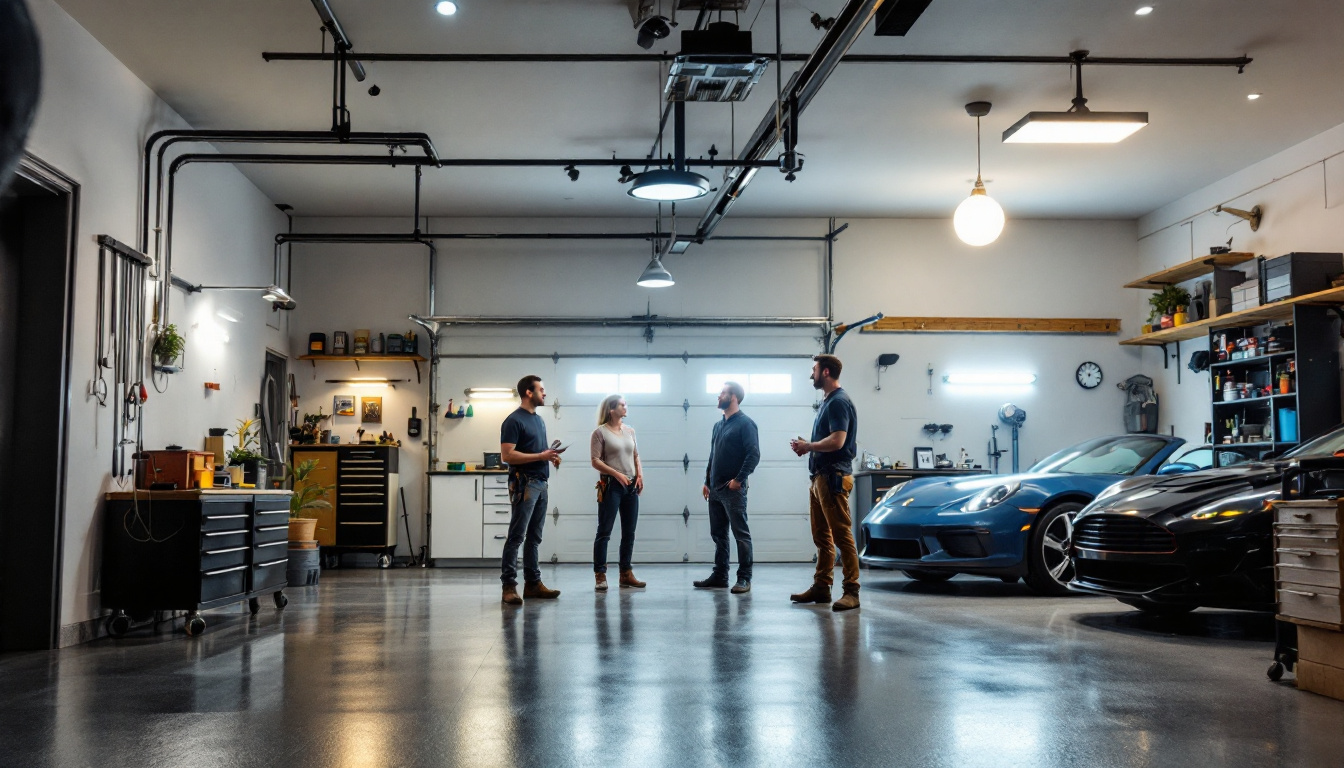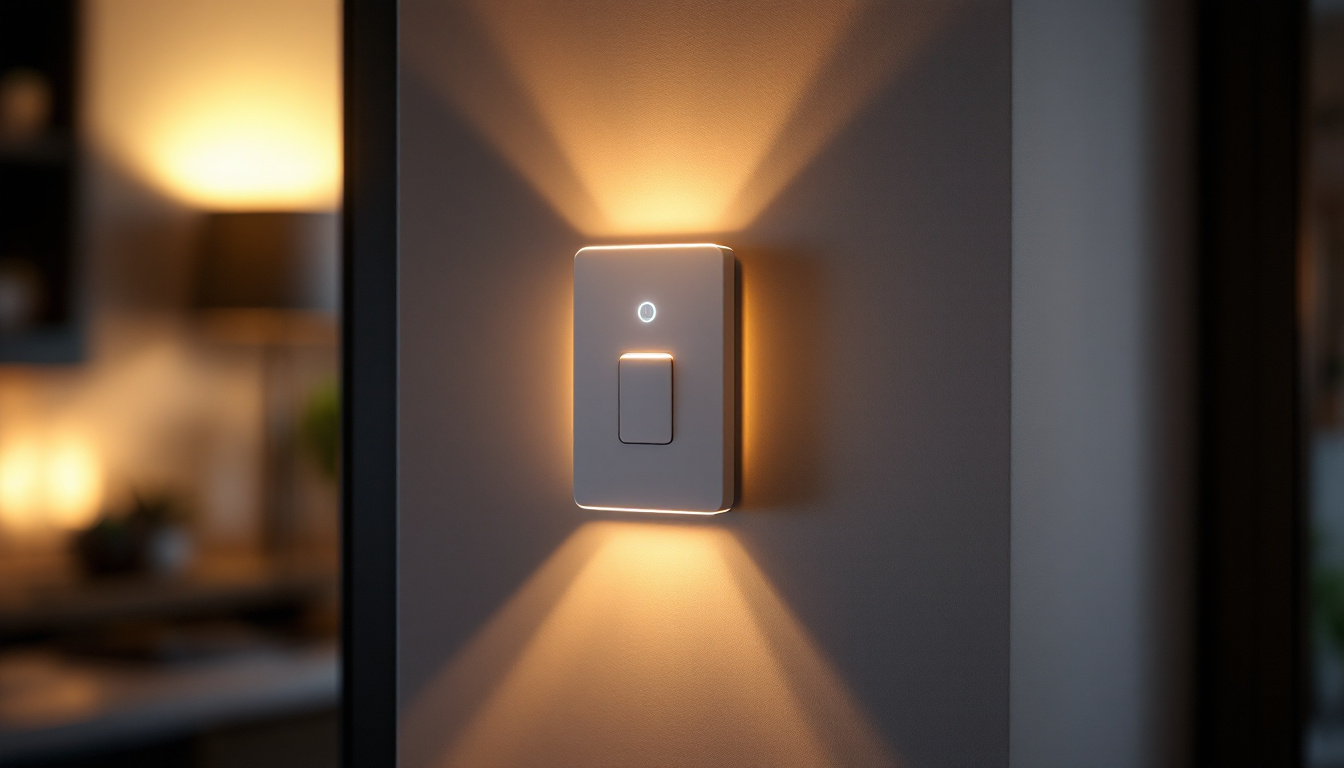
When it comes to illuminating a garage, the right lighting can make all the difference. Not only does effective lighting enhance visibility, but it also contributes to safety and functionality. For lighting contractors, understanding the best strategies for garage lighting is essential to meet client needs and expectations. This article explores the brightest light solutions for garages, offering insights into design, technology, and installation techniques.
Before diving into specific lighting solutions, it’s crucial to assess the unique needs of a garage space. Garages often serve multiple purposes, from vehicle storage to workshops and recreational areas. This versatility requires a tailored approach to lighting design. Additionally, the layout and size of the garage can play a significant role in determining the best lighting strategy. For example, a larger garage may need more fixtures or strategically placed lights to ensure even illumination throughout the space.
In a typical garage, there are several areas that require adequate lighting. These include workspaces, parking areas, and storage zones. Each section may demand different lighting levels and types. For instance, workspaces may benefit from bright, focused lighting, while general areas can utilize softer ambient lighting. Furthermore, incorporating adjustable lighting options can enhance functionality, allowing users to modify brightness based on the task at hand. This adaptability is especially useful in multifunctional garages where the activities can shift from detailed mechanical work to casual gatherings.
The activities performed in the garage can significantly influence lighting choices. For example, if the garage is primarily used for automotive work, brighter task lighting will be necessary to ensure precision and safety. Conversely, if the space is used for general storage or recreational purposes, a combination of ambient and accent lighting may suffice. Moreover, considering the seasonal use of the garage can also impact lighting decisions. In colder months, when the garage might be used more for indoor projects, ensuring adequate lighting becomes even more critical. Installing dimmable lights can also provide flexibility, allowing users to adjust the ambiance for different activities, whether it’s hosting a game night or working on a DIY project.
Once the specific needs of the garage are identified, the next step is selecting the appropriate lighting fixtures. The market offers a variety of options, each with its own advantages and disadvantages. Understanding the nuances of each type can help in making an informed decision that enhances both functionality and aesthetics.
Fluorescent lights have long been a popular choice for garages due to their energy efficiency and bright output. They provide a wide coverage area and are ideal for illuminating large spaces. However, they can sometimes produce a harsh light that may not be suitable for all tasks. Additionally, the flickering that can occur when fluorescent lights are warming up may be distracting, especially during detailed work. It’s also worth noting that these lights can be sensitive to temperature fluctuations, which might affect their performance in unconditioned garages during extreme weather.
LED lighting has rapidly gained popularity among lighting contractors for its numerous benefits. LEDs are energy-efficient, have a long lifespan, and offer a range of color temperatures. This versatility allows contractors to create customized lighting schemes that enhance the functionality of the garage. Moreover, LEDs emit less heat compared to traditional bulbs, making them a safer option in enclosed spaces. They also have the advantage of being available in various designs, from sleek recessed fixtures to rugged outdoor-style lights, providing options that can match the garage’s overall design and usage. Furthermore, many LED fixtures now come with smart technology features, allowing for remote control and dimming capabilities, which can be particularly useful for adjusting the ambiance based on the task at hand.
For specific tasks, such as working on vehicles or completing DIY projects, task lighting is crucial. Options include adjustable LED work lights, under-cabinet lighting, and portable work lamps. These fixtures can be strategically placed to provide focused illumination where it is most needed, ensuring safety and efficiency. In addition to standard task lights, consider incorporating magnetic work lights that can easily attach to metal surfaces, providing flexibility in positioning. Moreover, using lighted magnifiers can be invaluable for intricate tasks, such as soldering or detailed repairs, as they combine illumination with magnification, reducing eye strain and enhancing precision. With the right combination of task lighting, you can transform your garage into a well-lit workspace that caters to all your project needs.
The layout and design of lighting in a garage can significantly impact its overall functionality and aesthetic appeal. A well-thought-out design not only enhances visibility but also contributes to the overall ambiance of the space.
One effective strategy is to layer different types of lighting sources. Combining ambient, task, and accent lighting can create a balanced and versatile environment. Ambient lighting provides general illumination, while task lighting focuses on specific areas, and accent lighting highlights features or adds decorative elements.
Incorporating natural light into the garage design can reduce the need for artificial lighting and create a more inviting atmosphere. Skylights, windows, or light tubes can help illuminate the space during the day. Contractors should consider the garage’s orientation and surrounding structures to maximize natural light exposure.
As technology advances, smart lighting solutions have become increasingly popular. These systems offer enhanced control and flexibility, allowing users to customize their lighting experience.
Smart lighting systems can be programmed to adjust based on time of day or occupancy, ensuring optimal lighting levels at all times. Additionally, they can be controlled remotely via smartphones or voice-activated devices, providing convenience and energy savings. For contractors, integrating smart lighting options can add significant value to their services.
Many homeowners are now seeking to integrate their garage lighting with existing home automation systems. This allows for seamless control of lighting alongside other home functions, such as security and HVAC systems. Contractors should be familiar with various home automation platforms to offer comprehensive solutions to clients.
Energy efficiency is a critical factor in modern lighting design. Not only does it reduce electricity costs for homeowners, but it also contributes to environmental sustainability.
When selecting fixtures, contractors should prioritize energy-efficient options, such as LED lights and fixtures that are compatible with dimmers and sensors. These choices can significantly lower energy consumption while providing adequate illumination.
Incorporating motion sensors into garage lighting systems can further enhance energy efficiency. These sensors automatically turn lights on when someone enters the garage and off when the space is unoccupied. This not only saves energy but also adds convenience for users.
Proper installation is essential for maximizing the effectiveness of garage lighting. Lighting contractors should adhere to best practices to ensure safety, functionality, and aesthetic appeal.
The height and placement of lighting fixtures can significantly affect their performance. Fixtures should be installed at appropriate heights to minimize shadows and maximize coverage. For example, overhead lights should be positioned to avoid glare while providing even illumination across the garage.
Safety is paramount in any lighting installation. Contractors must ensure that all wiring is compliant with local electrical codes and standards. This includes using appropriate wiring methods and ensuring that fixtures are rated for the garage environment, especially in areas prone to moisture or temperature fluctuations.
Regular maintenance of garage lighting systems is essential to ensure longevity and optimal performance. Contractors should educate clients on the importance of upkeep to prevent issues down the line.
Dust and debris can accumulate on light fixtures, diminishing their brightness over time. Regular cleaning of fixtures will help maintain optimal light output. Contractors can recommend specific cleaning methods and products suitable for various types of fixtures.
While LED lights have a long lifespan, they will eventually need replacement. Contractors should inform clients about the expected lifespan of their chosen fixtures and provide guidance on when to replace bulbs or other components to ensure consistent lighting quality.
Educating clients about their lighting options is an essential part of a contractor’s role. A well-informed client is more likely to be satisfied with the final results and appreciate the value of the services provided.
During consultations, contractors should take the time to discuss the specific needs and preferences of the client. This includes understanding how the garage will be used and any aesthetic considerations. By engaging in open communication, contractors can tailor their recommendations to suit individual requirements.
Visual aids, such as lighting design software or sample fixtures, can help clients visualize the potential outcomes of their garage lighting project. This can facilitate better decision-making and enhance overall satisfaction with the final design.
In conclusion, effective garage lighting is a multifaceted challenge that requires careful consideration of various factors. From understanding the unique needs of the space to selecting the right fixtures and employing smart technology, lighting contractors have a wealth of strategies at their disposal. By prioritizing energy efficiency, safety, and client education, contractors can create bright, functional, and inviting garage environments that meet the diverse needs of homeowners.
Ready to elevate your garage lighting projects with the brightest and most efficient solutions? Look no further than LumenWholesale, where we provide contractors with the highest quality, spec-grade lighting products at unbeatable wholesale prices. Say goodbye to local distributor markups and hello to superior lighting that meets the highest industry standards. With our hassle-free bulk buying and free shipping, you can ensure every project shines with reliability and high performance. Don’t compromise on quality or value. Discover the best in wholesale lighting at LumenWholesale and make your next garage lighting installation a beacon of excellence.

Illuminate your outdoor spaces with expert tips on landscape spot lighting.

Discover the essentials of commercial LED lighting for outdoor spaces in this comprehensive guide tailored for lighting contractors.

Discover essential insights into solar strip lights for outdoor use with our comprehensive guide tailored for lighting contractors.

Discover how integrating motion sensors with light switches can revolutionize your home’s energy efficiency.